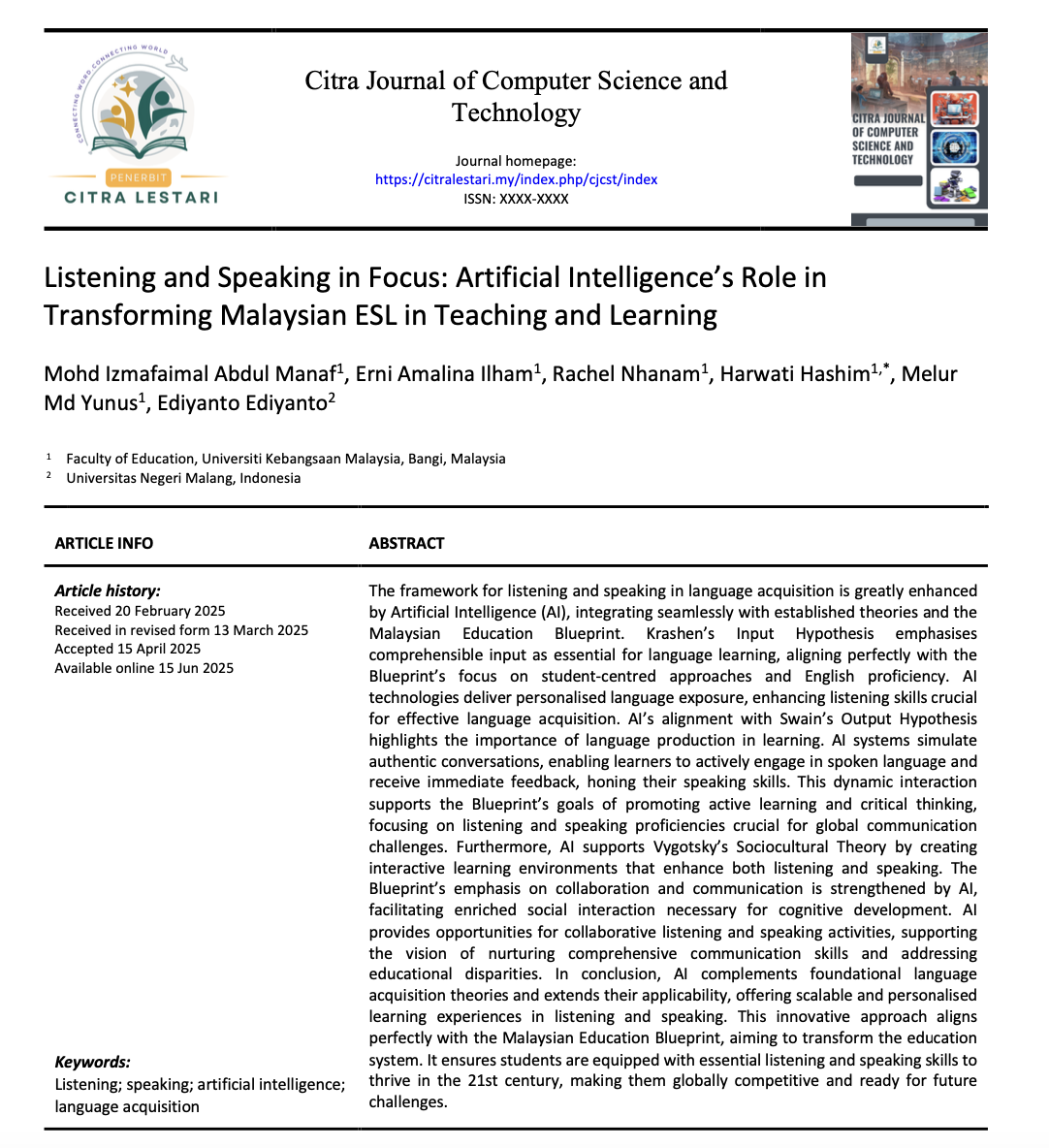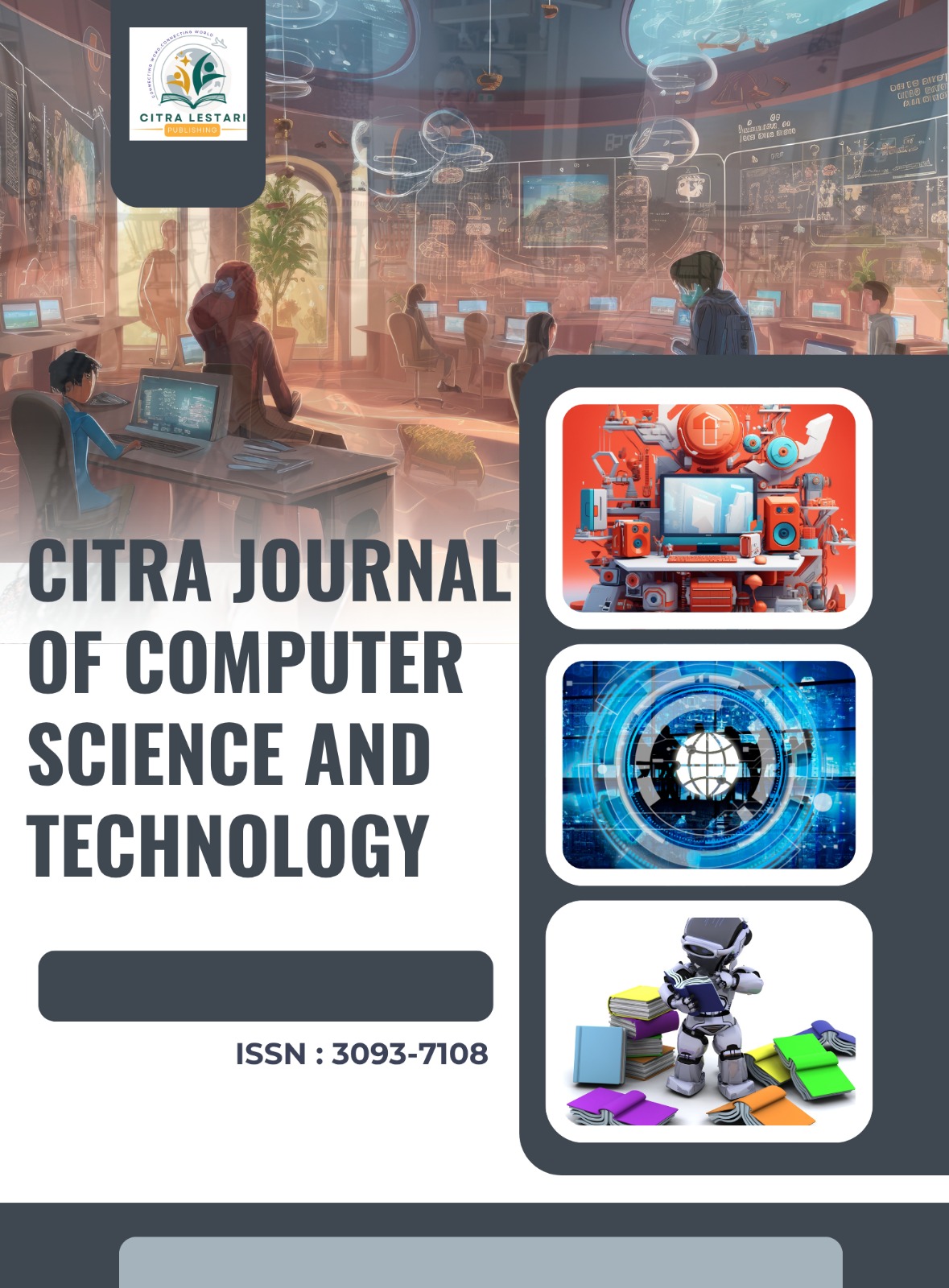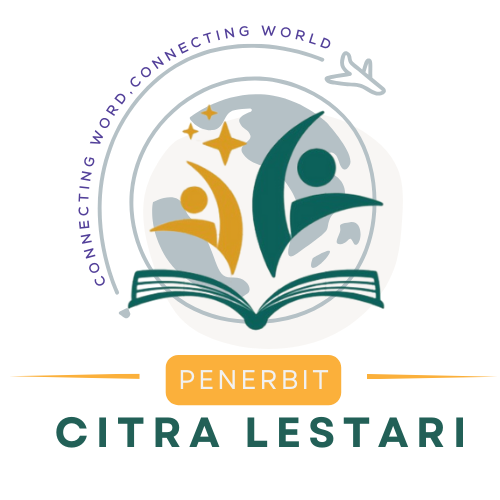Listening and Speaking in Focus: Artificial Intelligence’s Role in Transforming Malaysian ESL in Teaching and Learning
DOI:
https://doi.org/10.37934/cjcst.1.1.112Keywords:
Listening, speaking, Artificial Intelligence, language acquisitionAbstract
The framework for listening and speaking in language acquisition is greatly enhanced by Artificial Intelligence (AI), integrating seamlessly with established theories and the Malaysian Education Blueprint. Krashen’s Input Hypothesis emphasises comprehensible input as essential for language learning, aligning perfectly with the Blueprint’s focus on student-centred approaches and English proficiency. AI technologies deliver personalised language exposure, enhancing listening skills crucial for effective language acquisition. AI’s alignment with Swain’s Output Hypothesis highlights the importance of language production in learning. AI systems simulate authentic conversations, enabling learners to actively engage in spoken language and receive immediate feedback, honing their speaking skills. This dynamic interaction supports the Blueprint’s goals of promoting active learning and critical thinking, focusing on listening and speaking proficiencies crucial for global communication challenges. Furthermore, AI supports Vygotsky’s Sociocultural Theory by creating interactive learning environments that enhance both listening and speaking. The Blueprint’s emphasis on collaboration and communication is strengthened by AI, facilitating enriched social interaction necessary for cognitive development. AI provides opportunities for collaborative listening and speaking activities, supporting the vision of nurturing comprehensive communication skills and addressing educational disparities. In conclusion, AI complements foundational language acquisition theories and extends their applicability, offering scalable and personalised learning experiences in listening and speaking. This innovative approach aligns perfectly with the Malaysian Education Blueprint, aiming to transform the education system. It ensures students are equipped with essential listening and speaking skills to thrive in the 21st century, making them globally competitive and ready for future challenges.














